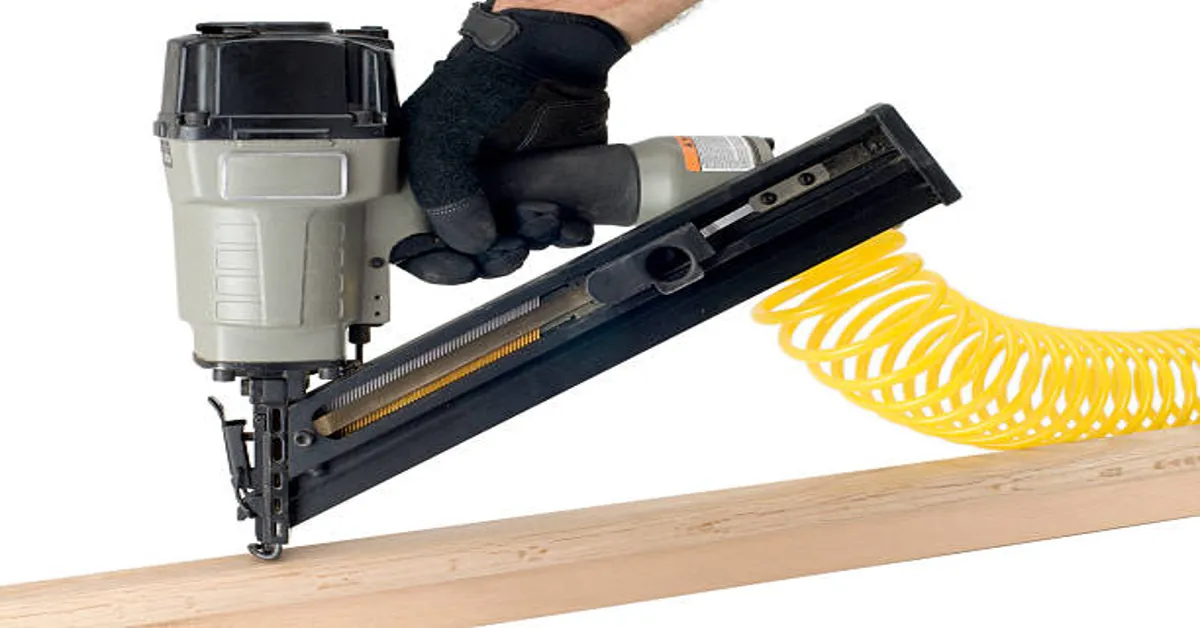When it comes to fastening wood, assembling furniture, or completing construction projects efficiently, the combination of a nailer (nail gun) and the right nail is a game-changer. In traditional carpentry, hammering nails manually was the only option, but the introduction of nailers revolutionized the industry by making the process faster, more precise, and less physically demanding. However, while many people focus on the nail gun itself, fewer realize the importance of the actual nail — the “nailer nail” — that goes inside the tool. Using the wrong size, shape, or type of nail can result in weak joints, surface damage, or even dangerous malfunctions.
In this guide, we will explore what nailer nails are, the different types available, how to choose the correct one for your project, safety precautions, maintenance tips, and common mistakes to avoid. Whether you’re a professional contractor or a DIY enthusiast, understanding nailer nails will help you achieve better results in your work.
What is a Nailer Nail?
A nailer nail is a specifically designed fastener intended for use in a nail gun (nailer). Unlike traditional loose nails, nailer nails are collated — meaning they are held together in strips, coils, or cartridges, allowing the nail gun to feed them automatically. These nails are engineered to fit specific nailer models, with precise dimensions in length, diameter, head shape, and shank type.
Nailer nails are typically made from high-carbon steel, stainless steel, or galvanized steel. Each type is suited for different purposes:
- High-carbon steel nails are strong and affordable but prone to rust in outdoor environments.
- Galvanized nails are coated to resist corrosion, making them suitable for outdoor construction.
- Stainless steel nails provide maximum corrosion resistance, often used in marine or coastal projects.
The design of a nailer nail also considers feeding efficiency, penetration power, holding strength, and minimal surface damage, making them more specialized than regular nails.
How Nailer Nails Differ from Traditional Nails
While both serve the same primary function — fastening materials together — there are clear differences between nailer nails and hand-driven nails:
- Collation method: Nailer nails are arranged in strips or coils held together by wire, plastic, or paper. Hand nails are loose and driven one at a time.
- Precision: Nailer nails are manufactured to tight tolerances to ensure smooth feeding in a nail gun.
- Speed of application: Using nailer nails with a powered nailer allows rapid firing, which is far faster than hammering each nail.
- Specialized designs: Many nailer nails have angled collation, clipped heads, or unique coatings for specific applications.
This difference in design and delivery means that selecting the right nailer nail is not just about the size but also about the compatibility with the nail gun and the job requirements.
Types of Nailer Nails
There is no single type of nailer nail — the industry offers a wide range to suit different tools and purposes. The main categories include:
a) Brad Nails
Brad nails are thin, small-headed nails typically ranging from 18-gauge to 23-gauge. They are commonly used in finishing work, such as trim, cabinetry, and decorative molding. Because they are small in diameter, they leave minimal visible holes and reduce the risk of splitting delicate wood.
b) Finish Nails
Finish nails are slightly thicker than brads, usually 15-gauge or 16-gauge. They offer more holding power while still being suitable for visible work, such as door and window casings, crown molding, and furniture assembly.
c) Framing Nails
Framing nails are heavy-duty nails used in construction framing, decking, and structural builds. They are thicker, longer, and often collated at an angle (21°, 28°, or 30°) for compatibility with framing nailers.
d) Roofing Nails
Roofing nailer nails have large, flat heads to secure shingles without pulling through. They are usually galvanized to resist rust from weather exposure.
e) Siding Nails
Siding nails are designed for fastening siding panels to exterior walls. They are corrosion-resistant and have heads designed to blend with the siding surface.
f) Staple Nails
Although technically staples rather than nails, some nailers use wide, flat staples for upholstery, flooring underlayment, or fencing.
Nail Collation Methods
How nails are held together affects both nailer compatibility and performance. The main collation types are:
- Plastic Collation – Nails are connected with plastic strips that shear off when fired. This method is common for framing nails.
- Wire Weld Collation – Nails are linked with thin wire, often in coils, suitable for high-capacity nailers.
- Paper Collation – Nails are glued to strips of paper, reducing flying debris and making them ideal for indoor finishing work.
Choosing the Right Nailer Nail for Your Project
Selecting the correct nailer nail is critical to achieving both structural integrity and aesthetic quality. Here are the main considerations:
a) Nail Length
The general rule for choosing length is to use a nail about three times as long as the material thickness you are fastening. For example, attaching a ½-inch board requires a 1½-inch nail.
b) Nail Gauge
The gauge refers to nail thickness — the lower the gauge number, the thicker the nail. Thick nails have higher holding power but may cause splitting in delicate materials.
c) Nail Material
Choose stainless steel or galvanized nails for outdoor use to prevent rust. Indoors, regular steel may be sufficient.
d) Coatings
Some nails have adhesive coatings that melt from the heat of driving, improving holding strength. Others are coated for corrosion resistance.
e) Tool Compatibility
Check your nailer’s manual for supported nail types, lengths, angles, and collation methods.
Proper Usage Techniques for Nailer Nails
Even the best nails will fail if they are not used correctly. To get optimal results:
- Set air pressure correctly – Too high and the nail may sink too deep; too low and it may not penetrate fully.
- Position the nailer squarely – Angled shots can cause nails to bend or surface blowouts.
- Test on scrap wood – Before starting, check penetration depth and adjust settings.
- Use consistent pressure – Maintain steady pressure on the nailer’s contact tip for consistent results.
Safety Precautions When Using Nailer Nails
Nail guns are powerful tools that can be dangerous if misused. Always follow safety best practices:
- Wear safety glasses to protect your eyes from flying debris.
- Keep hands clear of the firing area.
- Use the sequential firing mode rather than bump firing if you are new to nail guns.
- Disconnect the air supply or battery before loading or servicing.
- Be aware of what’s behind the material — nails can pass through thin stock and hit unintended surfaces.
Maintenance of Nailer Nails and Nail Guns
For long-term performance:
- Store nails in a dry environment to prevent rust.
- Keep the nailer clean and lubricated according to the manufacturer’s instructions.
- Inspect nail strips for damage before loading — bent or misaligned nails can jam the tool.
- Replace worn driver blades and seals promptly to maintain consistent driving force.
Common Mistakes to Avoid
- Using the wrong nail length – Leads to weak joints or nails protruding through the other side.
- Mixing incompatible collation types – Can cause jams or misfires.
- Ignoring wood grain direction – Some nails may follow the grain and exit the side of the board.
- Skipping test shots – Every project requires testing to ensure proper depth and alignment.
Advantages of Using Nailer Nails
- Speed – Projects are completed much faster than hand-nailing.
- Consistency – Uniform penetration depth and alignment.
- Reduced Fatigue – Less physical strain compared to hammering.
- Professional Finish – Especially for finishing nails and brads, which leave minimal marks.
Environmental Considerations
While nailer nails are generally made from steel, their production and coating processes can have environmental impacts. Using recyclable nails, avoiding over-ordering, and properly disposing of damaged nails help reduce waste. Stainless steel nails last longer in harsh environments, reducing the need for frequent replacements.
Final Thoughts
The nailer nail may seem like a small component compared to the power tool that drives it, but in reality, it is the part that holds your project together — literally. Understanding the different types, materials, and uses of nailer nails allows you to choose the perfect fastener for every task, ensuring both durability and visual appeal. When paired with a quality nail gun and used with proper safety and maintenance, the right nailer nail will help you work faster, safer, and with better results.
ALSO READ: Washjet: A Comprehensive Guide to Features, Uses, and Benefits
FAQs
Q1: Can I use any nail in a nail gun?
No. Nail guns are designed to use specific sizes, gauges, and collation types. Using incompatible nails can cause jams or damage.
Q2: What’s the difference between brad nails and finish nails?
Brad nails are thinner and better for delicate trim work, while finish nails are thicker and provide more holding power.
Q3: Are galvanized nails necessary for indoor work?
Not usually. Galvanized nails are mainly for outdoor projects to resist rust from moisture exposure.
Q4: Why do some nails have adhesive coating?
The heat from driving melts the coating, which increases holding strength and prevents nails from loosening over time.
Q5: How do I prevent my nailer nails from rusting?
Store them in a dry, sealed container and choose stainless steel or galvanized nails for environments prone to moisture.









